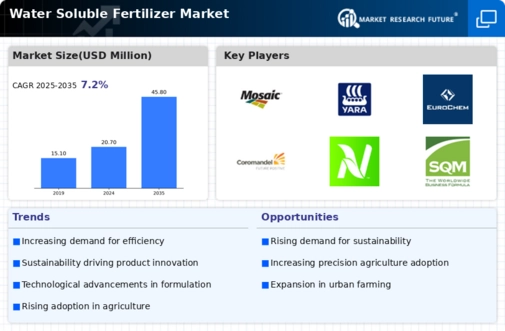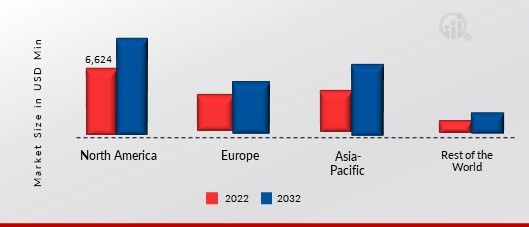Market Share
Water Soluble Fertilizer Market Share Analysis
water-soluble fertilizer market, companies employ diverse strategies to establish their positions and gain a competitive edge in meeting the needs of farmers and the agriculture industry. Water-soluble fertilizers, essential for providing essential nutrients to crops in a readily available form, require strategic positioning to effectively capture market share and cater to the preferences of growers.
One of the primary strategies utilized in the water-soluble fertilizer market is product differentiation. Companies invest in research and development to create innovative fertilizer formulations that offer unique benefits to farmers. These formulations may include specialized nutrient ratios, enhanced micronutrient content, or improved solubility for efficient nutrient uptake by plants. By differentiating their products based on these desirable features, companies can attract customers seeking solutions to optimize crop nutrition, yield potential, and quality.
Pricing strategy is also crucial in market share positioning within the water-soluble fertilizer market. While the production of water-soluble fertilizers may involve certain costs, companies must balance pricing to remain competitive. Some companies choose to compete based on price by offering cost-effective fertilizer solutions that provide value for farmers through improved crop performance and economic returns. This approach aims to appeal to budget-conscious customers while ensuring profitability and sustainability for fertilizer manufacturers.
Furthermore, companies often target niche markets or specific customer segments to tailor their water-soluble fertilizer strategies. For example, companies may develop fertilizer formulations tailored to specific crops, growing environments, or production systems. Additionally, companies may focus on addressing particular challenges or needs prevalent in certain regions or agricultural practices, such as nutrient deficiencies in alkaline soils or hydroponic crop production. By understanding the unique requirements and preferences of different customer segments, companies can customize their water-soluble fertilizer offerings to provide targeted solutions effectively. This targeted approach allows companies to position themselves as leaders in specific crop segments and build strong relationships with customers seeking tailored fertilizer solutions.
Branding and marketing efforts are also instrumental in market share positioning within the water-soluble fertilizer market. Building a strong brand identity helps companies establish credibility, trust, and recognition among farmers, agricultural stakeholders, and industry professionals. Through effective branding, companies can communicate the benefits and value proposition of their water-soluble fertilizer products, distinguishing themselves from competitors. Additionally, targeted marketing campaigns highlighting the agronomic benefits, environmental sustainability, and economic advantages of water-soluble fertilizers can influence purchasing decisions and drive demand in the market.
Moreover, strategic partnerships and collaborations play a crucial role in expanding market share and enhancing competitive positioning in the water-soluble fertilizer market. Collaborating with agricultural input suppliers, distributors, agronomic advisors, and research institutions allows companies to leverage their combined expertise, resources, and networks to penetrate new markets and reach a broader customer base. Partnerships may involve joint product development initiatives, co-marketing agreements, or distribution partnerships to accelerate the adoption and commercialization of water-soluble fertilizer products. By forging strategic alliances, companies can capitalize on synergies, expand their market reach, and strengthen their competitive position in the water-soluble fertilizer market.
In conclusion, the water-soluble fertilizer market is characterized by increasing demand for innovative solutions that optimize crop nutrition and performance. To succeed in this competitive landscape, companies employ various market share positioning strategies, including product differentiation, pricing, niche targeting, branding, and strategic partnerships. By understanding the diverse needs of farmers, innovating to meet evolving market demands, and building strong relationships with stakeholders, companies can establish a competitive edge and thrive in the dynamic water-soluble fertilizer market.












Leave a Comment